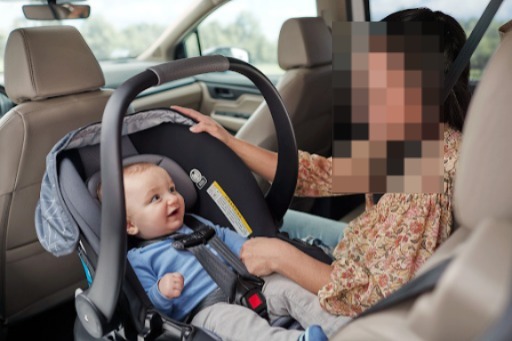Smart Car Seat Choices: Matching Your Child’s Age to the Perfect Safety Fit
Introduction
Selecting the perfect คาร์ซีท – https://babyhillsthailand.com/car-seat-for-baby/ for your child is a rather more substantial decision than most others will be as it specifically pertains to their safety and best interests. Your liveried urchin will have different safety requirements for each development stage, and a well-chosen car seat can make all of the difference when it comes to protecting them during travel. In this section, we break it down by age from newborns to toddlers and beyond so you know how to correspond the seat with your child’s age for maximum safety, comfort and peace of mind.
Why Your Child Needs a Car Seat at Every Age
Motor crashes still represent one of the most common injuries in children (although mortality rates have come down significantly over the past decade) but studies demonstrate that increased use of an appropriate carseat can help significantly make up for these numbers. Car seats are rated for specific ages and sizes for a reason; the wrong one can literally break with the way your size moves in a collision.
If parents turn the seat too soon or get a seat that is too small for their child, this all-important harness system might not work as mother nature intended it to, and important side-impact protection components will be reduced to a glorified set of shoulder pads. The right seat for your child based on their age is the foundation of safe travel.
Stage 1: Rear-Facing Car Seats (Newborn to Around Age 2)
The primary level of security at which your completely new baby will undoubtedly be inserted is going to be the rear-going through คาร์ซีท that supports the pinnacle, shoulder blades and then back bone by using a quick stop or even crash. The majority of experts recommend keeping kids rear-facing ideally until they outgrow the height and weight limits mentioned by the manufacturer.
Benefits of rear-facing seats include:
- Improved Head & Neck Support For Infants
- Decreased risk of spinal injuries in any sort of crash
- Safer place for little bodies to sit
If it’s your first child, perhaps you can go for an infant-only seat that has a removable carrier, if not enriched so. This reduces the ease to shuttle your baby from the automobile without waking them up.
Stage 2: Forward-Facing Car Seats (Ages 2 to Around 5–7)
When your child outgrows the rear facing limits, it is time to turn them around and in a forward facing **คาร์ซีท with a five point harness. Providing extra legroom and visibility for your little one, this stage includes all of the comfort features ideal for extended periods of rear-facing including side-impact protection, GCELL energy absorbing technology and plush padding.
Key tips for forward-facing use:
- Make sure to keep your child in a harnessed seat that fits the child as long as possible or until they reach the maximum height and weight limit.
- Harness straps must be at or above shoulder level
- Chest clip level with armpits for proper placement.
Although parents are quick to graduate their child to a booster seat, she recommends remaining in forward-facing harness as long as possible for the most protection.
Stage 3: Booster Seats (Age 5 and up, depending on size)
A booster seat is necessary for your child if he has outgrown a forward facing harness and still has not reached the height to use an adult seat belt. The booster seats your child up high enough that they can use the seat belt across the strong bones of their shoulder and pelvis, not across their neck or belly.
The boosters tend to fall into two main categories:
- High-back boosters: Provide head and are designed for cars without a headrest.
- Backless boosters: For big kids, in vehicles with adequate head support
When it comes to booster seats, one mistake parents make is when they stop using them as soon as possible and switch them over to just the seat belt. Keep children in a booster until they are 145 cm tall (4 feet 9 inches) or can sit with the seatbelt properly fit across the thighs.
Stage 4: Adult Seat Belt (Ages 10 and up)
Use an adult seat belt without a booster only when your child can sit against the back of the seat with knees bent at the edge, and the lap belt fits snugly across their upper thighs (not the stomach).
However, all children under 13 should ride in the back seat – it is always the safest position, no matter what kind of คาร์ซีท you use.
Tips for Choosing the Right Car Seat for Each Stage
- Follow manufacturer guidelines: check the seat’s manual for height and weight limits.
- Consider the space in your vehicle: some seats fit better in certain cars, so measure your backseat space before purchasing.
- Look for safety certifications in the seats: all child seats must meet local and international safety standards – get those that exceed them.
- Install correctly: Even the best คาร์ซีท is useless if not properly installed – do not skimp on professional installation inspections.
- Avoid second-hand seats unless you know their history: A child seat has an expiration date and can become rigid and not effectively protect the child.
Conclusion
The safety of your child is worth every moment spent choosing the right คาร์ซีท – https://babyhillsthailand.com/car-seat-for-baby/. Use outlined the four stages – rear-facing, forward-facing, booster, and then the adult seat belt – to make sure your child is traveling in the most advantageous possible way. Remember, the right car seat is not about the model year – it is about finding the perfect fit for their size and development right now. Reaching the ideal development and encouragement stage will give you the reassurance that every drive is as stable and secure as it can possibly be.






